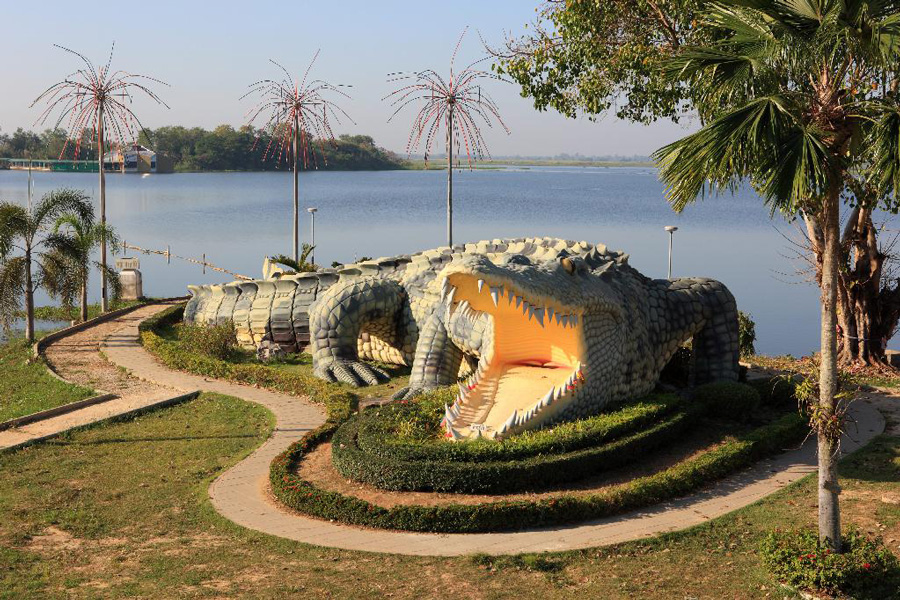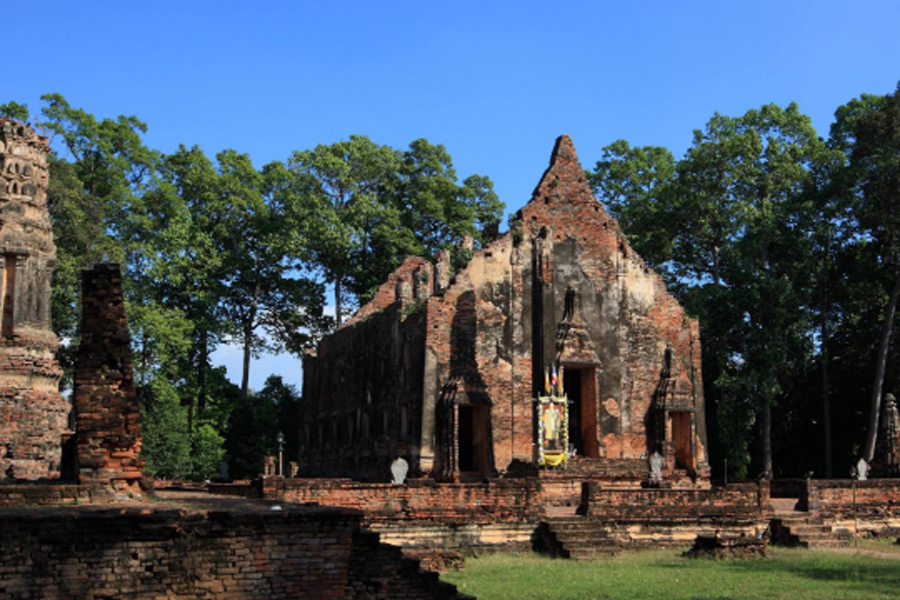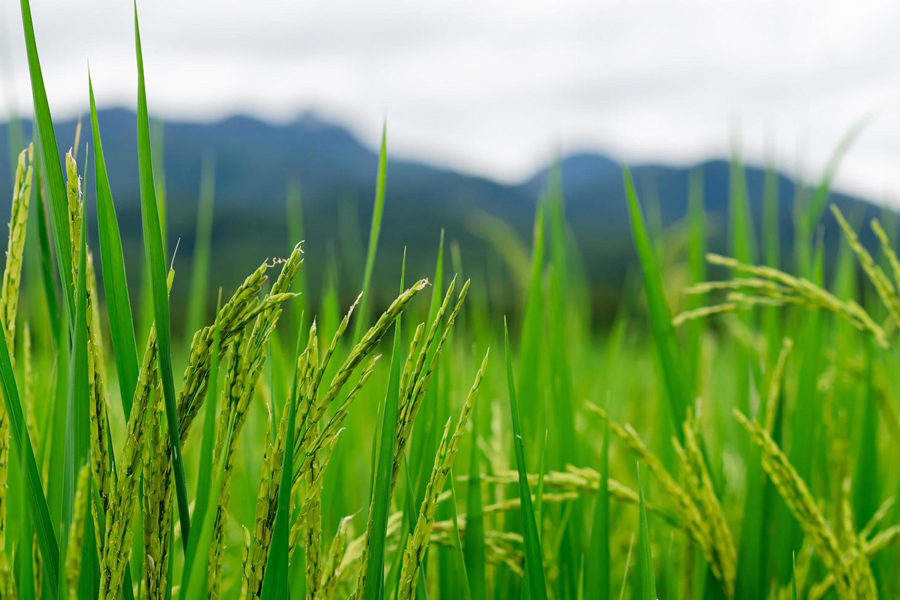Phichit

Phichit, a picturesque province nestled in the heart of the Chao Phraya River valley in lower northern Thailand, captivates visitors with its rich tapestry of cultural heritage and natural beauty. The provincial capital, also named Phichit, serves as a hub of administrative and cultural significance.
 Crocodile statue at Phichit
Crocodile statue at Phichit
Renowned for its fertile lands, Phichit is an agricultural gem, particularly celebrated for its high-quality jasmine rice. The landscape is adorned with historic temples, with Wat Tha Luang standing out for its ancient pagoda and intricate murals. Nature enthusiasts can relish the tranquility of the Yom River and the scenic charm of Bueng Si Fai, a sprawling freshwater lake perfect for birdwatching. Throughout the year, Phichit hosts vibrant festivals, providing a window into the local traditions. With a blend of traditional cuisine, warm hospitality, and a serene atmosphere, Phichit offers a delightful escape off the beaten path for those seeking an authentic Thai experience.
Phichit, ensconced in the lush embrace of Thailand, stands as a testament to the passage of time, a province where the narrative of history unfolds in layers, each stratum revealing a unique facet of its rich heritage. Traces of prehistoric settlements, echoing with the whispers of ancient civilizations, hint at the deep-rooted foundations upon which Phichit rests. However, it was during the 13th century that the province began to truly flourish, under the influence of the Sukhothai Kingdom. This era saw the Chao Phraya River, a sinuous lifeline coursing through Phichit, emerge as a vital artery for trade and cultural exchange. The river not only facilitated the flow of goods but also fostered the exchange of ideas, leaving an indelible mark on the region's identity.
 Ancient architecture in Phichit
Ancient architecture in Phichit
As the Sukhothai Kingdom waned, the Ayutthaya Kingdom ascended to power, shaping the destiny of Phichit in its wake. The province, strategically positioned along the Chao Phraya River, continued to thrive as a cultural and economic hub. Temples and architectural marvels dotting the landscape bore witness to the flourishing creativity and spiritual devotion of the inhabitants. The ebb and flow of centuries were not without challenges, though. The 18th century brought forth the Burmese invasions, casting a shadow of uncertainty over the region. Phichit faced periods of conflict and occupation, testing the resilience of its people.
Amid the turbulence, the river that had been both a blessing and a conduit of challenges continued to flow, and with the dawn of the Rattanakosin Period in the late 18th century, stability returned. The administrative reforms under King Rama IV in the 19th century officially designated Phichit as a province, cementing its place within the evolving governance structure of the kingdom. This period ushered in a new chapter for Phichit, characterized by a blend of tradition and modernity.
The 20th century brought further transformations. Phichit witnessed economic developments and social changes that mirrored the broader shifts in Thailand. Despite the wave of modernization, the province retained its agricultural significance. Notably, Phichit became renowned for its production of high-quality jasmine rice, a symbol of the region's agricultural prowess.
 Thai jasmine rice seed from its tree with green leaves
Thai jasmine rice seed from its tree with green leaves
Today, as one traverses the landscapes of Phichit, the confluence of history and modernity becomes palpable. Ancient temples, such as Wat Tha Luang, with its ancient pagoda and intricate murals, stand as living testaments to the enduring spirituality and artistic expression of the people. The Yom River, meandering through the province, whispers tales of the past, while Bueng Si Fai, a vast freshwater lake, provides a serene backdrop for contemplation and birdwatching.
You may also like: Top 5 Most Popular Thailand Festivals
The best time to visit Phichit, as with much of Thailand, is during the cool and dry season, which typically spans from November to February. During these months, the weather is more pleasant with cooler temperatures and lower humidity. This makes it an ideal time for outdoor activities, sightseeing, and exploring the natural beauty of the region.
 Wat Kaeo Phichit
Wat Kaeo Phichit
1. Cool and Dry Season (November-February):
- Temperature: Temperatures are more comfortable during this period, ranging from around 18°C to 30°C (64°F to 86°F).
- Weather: The weather is generally dry, and the skies are clear, making it suitable for exploring historical sites, enjoying outdoor activities, and experiencing local festivals.
2. Hot Season (March-May):
- Temperature: From March to May, temperatures start to rise, with daytime temperatures often exceeding 30°C (86°F) and reaching higher levels in April.
- Weather: The hot season can be quite dry, and while it's still possible to visit during this time, be prepared for the higher temperatures.
3. Rainy Season (June-October):
- Temperature: The rainy season, from June to October, sees both higher temperatures and increased humidity.
- Weather: Heavy rainfall is common during these months, and while the landscapes are lush and green, outdoor activities may be affected by the rain.
Traveling to Phichit is a seamless and diverse experience, offering multiple transportation options. If embarking from Bangkok, the Northern Bus Terminal (Mo Chit 2) provides a convenient departure point for buses. With both air-conditioned and non-air-conditioned services, the scenic journey takes approximately 4-5 hours. Alternatively, the Hua Lamphong Railway Station in Bangkok serves as a starting point for those opting for the train. This mode of transportation not only offers efficiency but also a picturesque route through the Thai countryside, with the journey taking around 4-5 hours. For those seeking flexibility, driving is an option, with Phichit located approximately 330 kilometers north of Bangkok. Taking Highway 1 (Phahonyothin Road) and connecting to Highway 32 ensures a direct route to the province, though travel times may vary based on traffic conditions. Additionally, the option of flying exists, with Phitsanulok Airport being the closest, situated about 90 kilometers away. Once in Phichit, local transportation options like taxis, tuk-tuks, and motorbike taxis facilitate easy exploration of the town and nearby attractions.
You may also like: Things you need to know about Pad Thai